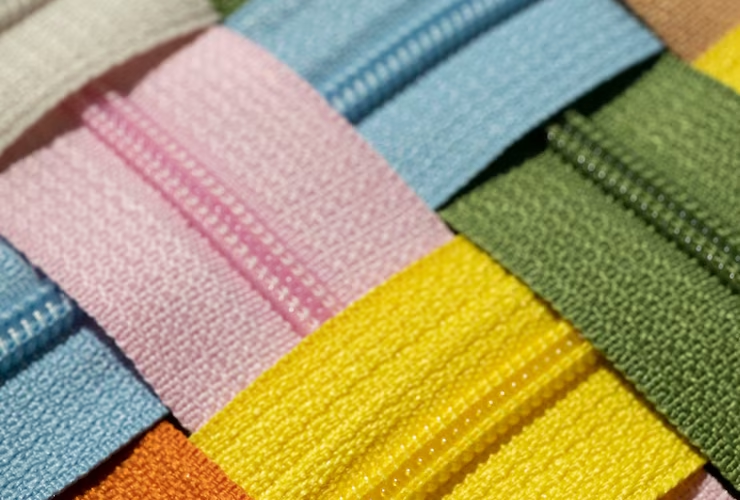When it comes to sewing, one term that frequently surfaces is Nahttypen, which translates to “types of seams” in English. Whether you’re a sewing enthusiast, fashion design student, or home decor hobbyist, understanding the different Nahttypen is key to creating high-quality, long-lasting garments and projects. In this article, we will explore the primary types of seams, their applications, and best practices to master them.
What Are Nahttypen?
In the world of textiles, Nahttypen refer to various types of seams used to join two or more pieces of fabric. They provide structure, enhance durability, and contribute to the aesthetic of finished garments. From functional to decorative, every seam has a specific role. Selecting the right seam type is essential for the intended purpose of your project.
Why Understanding Nahttypen Matters in Sewing
Using the wrong seam can lead to garment failure, discomfort, or poor appearance. For instance, a flat-felled seam offers strength and neatness ideal for jeans, while a French seam suits delicate fabrics like chiffon. Mastering Nahttypen helps you:
-
Improve garment quality
-
Enhance visual appeal
-
Ensure comfort and durability
-
Customize designs with precision
Types of Nahttypen You Should Know
Let’s dive into the most commonly used Nahttypen, breaking down their structure, use cases, and advantages.
Plain Seam (Einfache Naht)
This is the most basic and widely used seam. It joins two pieces of fabric with a single line of stitching, usually on the wrong side.
Use Cases:
-
Everyday clothing
-
Linings
-
Home decor
Benefits:
-
Easy and quick to sew
-
Uses minimal fabric
Pro Tip: Always press the seam open to reduce bulk.
French Seam (Französische Naht)
Perfect for delicate or sheer fabrics, the French seam hides raw edges inside a second seam.
Use Cases:
-
Silk garments
-
Blouses and lingerie
-
Fine children’s clothing
Benefits:
-
Clean and professional finish
-
Durable and long-lasting
Pro Tip: Keep your seam allowance small to avoid bulk.
glat-Felled Seam (Kappnaht)
Known for strength and a tidy finish, flat-felled seams are common in jeans and shirts.
Use Cases:
-
Denim
-
Workwear
-
Activewear
Benefits:
-
Strong and secure
-
No raw edges visible
Pro Tip: Use a topstitching thread for decorative impact.
Zigzag Seam (Zickzacknaht)
Used mainly for finishing raw edges, zigzag seams prevent fraying and add elasticity.
Use Cases:
-
Knit fabrics
-
Temporary seams
-
Reinforcement
Benefits:
-
Adds stretch to seams
-
Prevents unraveling
Pro Tip: Adjust stitch width and length depending on fabric weight.
Double-Stitched Seam (Doppelnaht)
As the name implies, this seam uses two rows of stitching for added strength.
Use Cases:
-
Sportswear
-
Tents and outdoor gear
-
Bags
Benefits:
-
High durability
-
Enhanced structure
Pro Tip: Use contrasting thread for a designer look.
Bound Seam (Eingefasste Naht)
Bound seams use bias tape or a similar fabric strip to encase raw edges.
Use Cases:
-
Reversible garments
-
Couture fashion
-
Finishing unlined jackets
Benefits:
-
Elegant and polished
-
Protects fabric edges
Pro Tip: Coordinate binding color with your design.
Lapped Seam (Überlappte Naht)
One fabric edge laps over the other and is stitched down, often used in non-garment applications.
Use Cases:
-
Upholstery
-
Leatherwork
-
Technical gear
Benefits:
-
Visually distinct
-
Great for thick fabrics
Pro Tip: Topstitch for added security and aesthetics.
Serged Seam (Overlocknaht)
Made using an overlock machine, this seam trims and finishes edges simultaneously.
Use Cases:
-
Stretch garments
-
Undergarments
-
Fast sewing projects
Benefits:
-
Fast and efficient
-
Clean and professional edge
Pro Tip: Use matching thread cones for a neat finish.
Decorative Seam (Ziernaht)
Used primarily for visual enhancement rather than function, decorative seams elevate garment design.
Use Cases:
-
Jackets
-
Decorative pillows
-
Embellished fashion
Benefits:
-
Adds uniqueness
-
Complements fabric design
Pro Tip: Experiment with metallic or colorful threads.
Mock Flat-Felled Seam (Falsche Kappnaht)
This variation mimics the look of flat-felled seams with less work and bulk.
Use Cases:
-
Lightweight garments
-
Costumes
-
Decorative clothing
Benefits:
-
Easier construction
-
Similar visual effect
Pro Tip: Great for beginners wanting the look of complex seams.
FAQs About Nahttypen
What are the most durable Nahttypen?
Flat-felled and double-stitched seams are among the strongest and most durable, perfect for workwear or heavy fabrics.
Which Nahttypen are best for stretch fabrics?
Zigzag and serged seams are ideal as they provide the necessary elasticity and prevent fabric distortion.
Can Nahttypen impact the appearance of a garment?
Absolutely. Seams like French or bound seams enhance visual appeal while keeping insides tidy.
How do I choose the right Nahttypen?
Consider fabric type, garment purpose, required durability, and aesthetic. Each seam serves different needs.
Is it okay to mix different Nahttypen in one project?
Yes, as long as they serve the function needed in their specific area. Many designers do this for both function and style.
Do I need special tools for advanced Nahttypen?
For seams like flat-felled or serged seams, specialized feet or machines can help, but many can be done on a basic sewing machine with practice.
Conclusion
Mastering Nahttypen is a vital skill in sewing that transforms ordinary fabric into tailored, durable, and stylish creations. From the simplest plain seam to the refined French or bold flat-felled, each type has a purpose and a place. As you practice and explore these seams, you’ll find your sewing becoming more intentional, efficient, and professional.
So, the next time you pick up a needle and thread, think beyond stitches—think Nahttypen





